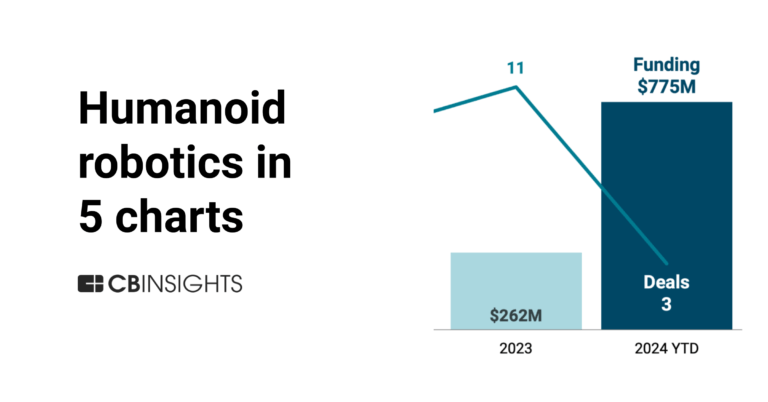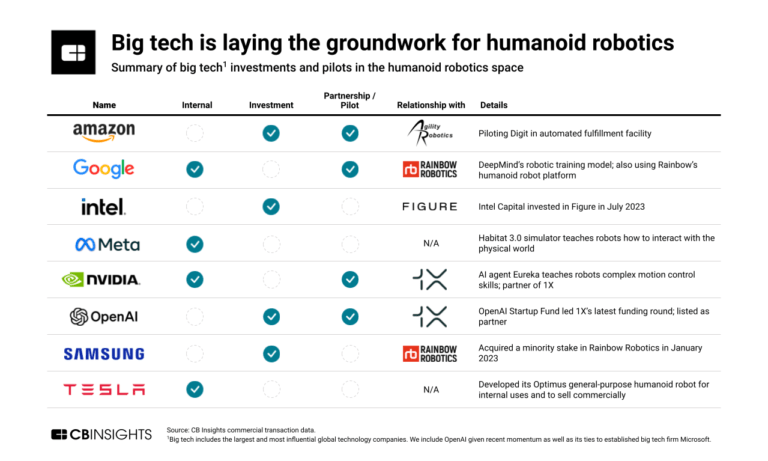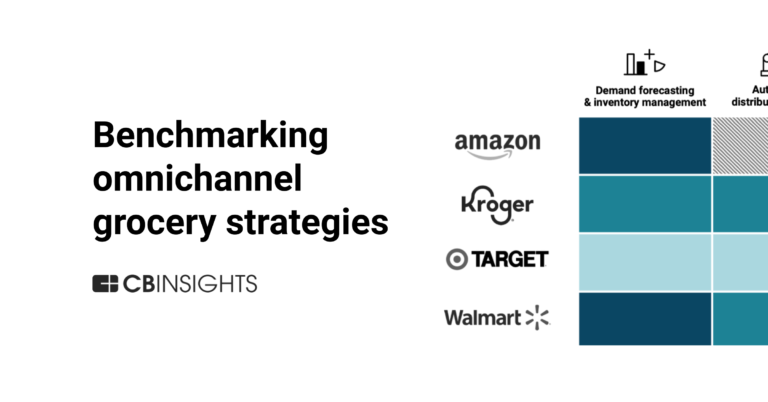
Agility Robotics
Founded Year
2015Stage
Unattributed | AliveTotal Raised
$179.6MLast Raised
$600K | 1 yr agoMosaic Score The Mosaic Score is an algorithm that measures the overall financial health and market potential of private companies.
-24 points in the past 30 days
About Agility Robotics
Agility Robotics is a leading manufacturer of mobile manipulation robots, focusing on advanced automation solutions for the supply chain and manufacturing sectors. The company's main offerings include the humanoid robot Digit, which is designed to integrate into material handling workflows, and the cloud automation solution Agility Arc, which enhances various industrial processes. Agility Robotics primarily serves sectors such as third-party logistics, manufacturing, retail & eCommerce, and distribution. It was founded in 2015 and is based in Tangent, Oregon.
Loading...
ESPs containing Agility Robotics
The ESP matrix leverages data and analyst insight to identify and rank leading companies in a given technology landscape.
The industrial humanoid robot market specifically focuses on the development, manufacturing, and deployment of humanoid robots for use in industrial settings. Humanoid robots are designed to resemble the human body and are equipped with advanced sensors, actuators, and artificial intelligence capabilities. In industrial applications, humanoid robots are employed to perform tasks traditionally carr…
Agility Robotics named as Leader among 15 other companies, including Tesla, Boston Dynamics, and UBTECH Robotics.
Loading...
Research containing Agility Robotics
Get data-driven expert analysis from the CB Insights Intelligence Unit.
CB Insights Intelligence Analysts have mentioned Agility Robotics in 7 CB Insights research briefs, most recently on May 31, 2024.
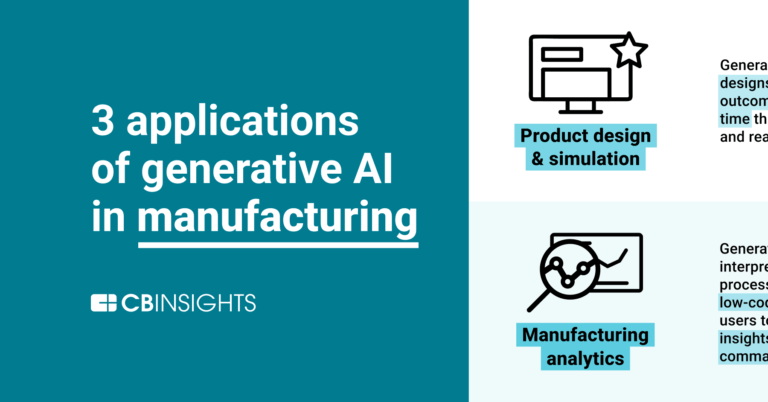
May 31, 2024
3 applications of generative AI in manufacturing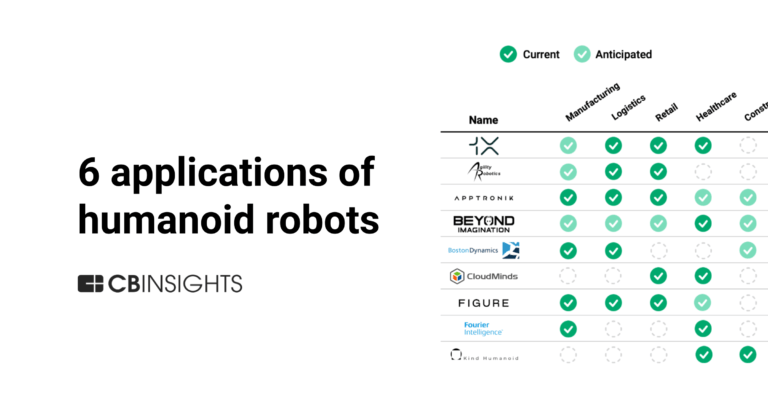
Mar 26, 2024
6 applications of humanoid robots across industries

May 17, 2022 report
AI 100: The most promising artificial intelligence startups of 2022Expert Collections containing Agility Robotics
Expert Collections are analyst-curated lists that highlight the companies you need to know in the most important technology spaces.
Agility Robotics is included in 9 Expert Collections, including Construction Tech.
Construction Tech
1,404 items
Companies in the construction tech space, including additive manufacturing, construction management software, reality capture, autonomous heavy equipment, prefabricated buildings, and more
Supply Chain & Logistics Tech
4,802 items
Companies offering technology-driven solutions that serve the supply chain & logistics space (e.g. shipping, inventory mgmt, last mile, trucking).
Robotics
2,006 items
This collection includes startups developing autonomous ground robots, unmanned aerial vehicles, robotic arms, and underwater drones, among other robotic systems. This collection also includes companies developing operating systems and vision modules for robots.
Advanced Manufacturing
6,362 items
Companies in the advanced manufacturing tech space, including companies focusing on technologies across R&D, mass production, or sustainability
AI 100
200 items
Job Site Tech
864 items
Companies in the job site tech space, including technologies to improve industries such as construction, mining, process engineering, forestry, and fieldwork
Agility Robotics Patents
Agility Robotics has filed 8 patents.
The 3 most popular patent topics include:
- actuators
- automotive transmission technologies
- gears

Application Date | Grant Date | Title | Related Topics | Status |
|---|---|---|---|---|
2/25/2020 | 10/29/2024 | Robotics, Actuators, Robots, Hexapod robots, Biomorphic robots | Grant |
Application Date | 2/25/2020 |
|---|---|
Grant Date | 10/29/2024 |
Title | |
Related Topics | Robotics, Actuators, Robots, Hexapod robots, Biomorphic robots |
Status | Grant |
Latest Agility Robotics News
Oct 29, 2024
Meet the next generation of humanoid robots Meet the next generation of humanoid robots Daina Lawrence Published 4 hours ago Share In Flowery Branch, Georgia, an hour’s drive from Atlanta, robots designed to look and move like humans are unpacking and moving boxes in a warehouse run by logistics company GXO. Standing at five-foot-nine, their hands are metallic pincers capable of lifting 35 pounds, they use electricity in their legs to move up and down, and they go by the name Digit. Developed by Oregon-based Agility Robotics, these robots are human-centric, meaning they are designed to work alongside people, and they are being touted as the answer to labour shortages around the world and across sectors. These machines can do the work that many humans simply don’t want to do. “In the last 10 years, we’ve seen the adoption of mobile robots and collaborative robots,” says Melonee Wise, chief product officer at Agility Robotics. “Humanoids are coming into a market where there’s these other mature automation technologies and so there’s really high expectations.” A lot of the questions on the role of humanoid robots in the workplace revolve around how they will displace the humans currently in those roles, Ms. Wise says, adding that much of the fears may be rooted in intimidation. “I don’t think the robot itself changes people’s perception. Actually, when you get down to it and you start talking to workers, what they’re actually more concerned about is that they’re unqualified to work with the machine, and that they won’t be trained to work with the machine.” This is not the case, Ms. Wise says. Similar to the autonomous mobile robots (AMR) space, companies developing humanoid robots are focused on making the technology user friendly and familiar, installing user software as apps on mobile phones or as applications in web browsers. “We’re going to be focused on making the robots easy to use, making sure that people don’t need a lot of training –– and that they will feel comfortable with the training they do have and some of their everyday experience –– to be able to use these new tools,” she explains. Agility’s Digit is one of several humanoid robots coming to market. Tesla has its human workers wearing sensors that can capture their movements, then the company can apply data to its future humanoid workforce called Tesla Optimus . Norway’s 1X Technologies is looking to deploy its humanoid assistant, NEO, into homes as early as next year. NEO is designed not only to complete labour tasks, but also to provide a comfortable touch, as displayed by a one-armed hug in its promotional video . Cindy Friedman, a researcher and PhD candidate at the Ethics Institute of Utrecht University in the Netherlands, whose work centres around humanoid robots and emphasizes how important human-human interaction is both socially and morally, says there is a place for robotics in sectors such as manufacturing –– but they don’t need to look like humans to get the job done. “Many roles can be fulfilled by robots that are not humanoids,” Ms. Friedman says. “But in some instances, a humanoid design would be helpful in that it could make it easier to navigate spaces that are designed for human bodies.” She adds if that’s the case, there needs to be a focus on their appearances and what their bodily forms represent. For example, if humanoid robots are given certain tasks, like caretaking for the aging, if they look more female in appearance will this reinforce gender stereotypes? Will children be less likely to visit their aging parents because they consider them cared for, thereby increasing loneliness among the older population? Ms. Friedman says the role of humanoid robots in the workplace would very much depend on the type of work. But there’s also the consideration of whether we even need these robots. “I think one of the most important ethical questions to ask is whether we are really solving a problem with humanoid robots, or if it is a case of techno-solutionism,” Ms. Friedman says. “Are we developing these robots in an attempt to push the boundaries of science and technology, simply because we can, or do we really need these robots?” The workforce, particularly manufacturing, is getting a lot more comfortable with the idea of automation and traditional robots. The stock of operational robots around the globe hit a new record of about 3.9 million units, according to The International Federation of Robotics (IFR). “Traditional industrial robots and service robots are already the answer to fight these labour shortages,” says IRF press officer Carsten Heer. “Since the robot takes on the 4 ‘Ds’ of dull, dirty, dangerous and difficult tasks, their use is even more attractive for manufacturers to support their human workforce.” Fredrik Odegaard, professor of Management Science at Western University’s Ivey Business School, likens this new phase of technology, and accompanying fears, to the industrial revolution or the introduction of the assembly line, when workers were concerned about their place alongside this new device. “I think this fear has been going for a long time about how the robots are going to replace all the workforce, that the workforce is going to get decimated because you can just automate,” Dr. Odegaard says. “My own personal belief,” he adds, “and what I’ve seen if I track technology and industrial revolutions, is that I don’t think that’s going to happen. I think it’s actually going to create more jobs than the task that it’s going to replace.”
Agility Robotics Frequently Asked Questions (FAQ)
When was Agility Robotics founded?
Agility Robotics was founded in 2015.
Where is Agility Robotics's headquarters?
Agility Robotics's headquarters is located at 32114 Mallard Ave, Tangent.
What is Agility Robotics's latest funding round?
Agility Robotics's latest funding round is Unattributed.
How much did Agility Robotics raise?
Agility Robotics raised a total of $179.6M.
Who are the investors of Agility Robotics?
Investors of Agility Robotics include Sony Innovation Fund, Playground Global, Robotics Hub, MFV Partners, ITIC Ventures and 8 more.
Who are Agility Robotics's competitors?
Competitors of Agility Robotics include Foundation, Sanctuary AI, Figure, 1X, Asylon and 7 more.
Loading...
Compare Agility Robotics to Competitors

Boston Dynamics specializes in advanced mobile manipulation robots within the robotics and automation industry. The company offers robots with capabilities in dynamic sensing, industrial inspection, and mobile manipulation, as well as software for fleet management and analysis. Boston Dynamics primarily serves sectors such as manufacturing, energy, construction, logistics, and government with their robotic solutions. It was founded in 1992 and is based in Waltham, Massachusetts. Boston Dynamics operates as a subsidiary of Hyundai Motor Company.

Figure is an AI robotics company that focuses on developing general-purpose humanoid robots. Its main product, Figure 01, is a commercially viable autonomous humanoid robot designed to perform a variety of tasks across multiple industries, combining human-like dexterity with advanced artificial intelligence. Its humanoid robots are engineered to support sectors such as manufacturing, logistics, warehousing, and retail. It was founded in 2022 and is based in Sunnyvale, California.

Foundation focuses on the development of general-purpose robotics within the technology sector. The company offers advanced humanoid robots designed to operate in complex environments, aimed at reducing human risk in conflict zones and improving efficiency in labor-intensive industries. It was founded in 2024 and is based in San Francisco, California.

Sanctuary AI specializes in the development of humanoid general-purpose robots within the robotics industry. The company offers robots that are capable of performing a variety of tasks autonomously or under remote human supervision, aiming to improve safety, efficiency, and sustainability in the workplace. Sanctuary AI's robots are designed to work alongside humans, addressing labor shortages and providing opportunities for remote operation of physical tasks. It was founded in 2018 and is based in Vancouver, Canada.

Apptronik specializes in the development of humanoid robots for various automation tasks across multiple industries. Its main product, Apollo, is a general-purpose humanoid robot designed to perform a wide range of tasks that typically require human effort, such as case picking, palletization, and machine tending. Apptronik's robots are intended to address labor shortages, reduce workplace injuries, and improve operational efficiency in sectors like third-party logistics (3PL), retail, and manufacturing. It was founded in 2015 and is based in Austin, Texas.
PAL Robotics is a leading company focused on the development of service robots in the robotics industry. The company's main offerings include humanoid and mobile robots designed to add value to research institutions and companies. These robots are primarily used in sectors such as research, logistics, retail, and social services. It is based in Barcelona, Spain.
Loading...
